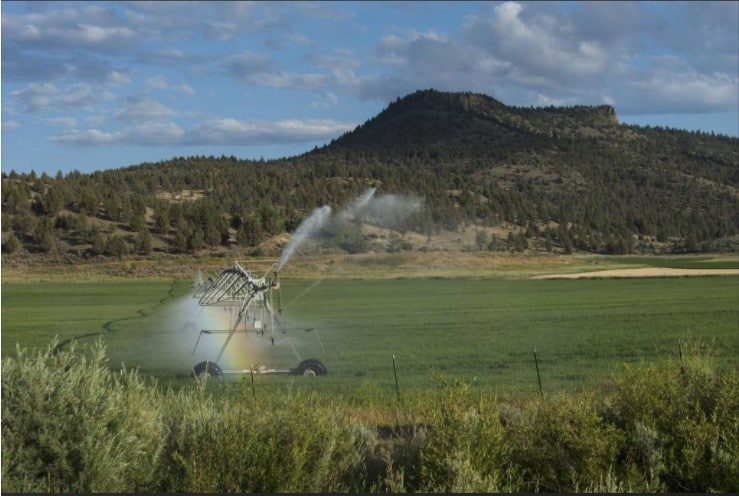This article was published on: 07/1/21 3:45 PM
Much of Oregon is currently experiencing some level of drought. In many parts of the state, this means water is not available to meet all demands or satisfy all existing water rights. For example, in central Oregon, many irrigation district patrons will receive less than one-half of their normal water allocations. Further south in the Klamath Basin, farmers recently learned that no irrigation water will be delivered to more than 100,000 acres of farmland.
Severe, persistent droughts highlight the need for landowners, buyers, and lessees to understand the water rights associated with a particular property or operation. This article suggests three questions that should be asked when investigating water rights.
1.Do you have the right to use water?
All water in Oregon – including surface water and groundwater – belongs to the public. With limited exceptions, the use of that water requires some type of state authorization. Water rights are granted with specific terms and conditions that govern their use. For example, water rights will typically specify the source, point of diversion (discussed below), type of use, place of use, season of use, and quantity of water, among other limitations. In certain instances, water rights can be lost due to non-use.
Certain uses of water are exempt from the requirement to obtain written authorization from the state – generally referred to as “exempt uses.” For example, exempt uses generally include the right to pump up to 15,000 gallons per day of groundwater for domestic use and 5,000 gallons per day for industrial use. However, care should be taken to understand the scope of any exempt use and whether the state has placed further restrictions on such use based on location or water source.
Landowners, buyers, and lessees should confirm that all existing uses of water on a given parcel are authorized under a valid, existing water right or exempt use. Just because a seller is currently using water on the parcel doesn’t mean the use is authorized or valid.
If a particular parcel lacks water rights, options include obtaining a new water right (increasingly difficult), purchasing and transferring existing water rights, or purchasing water from a water supply entity. Additional options may be available in counties where the governor has issued a drought declaration (e.g., emergency drought permits and temporary drought transfers).
2. Do you have access to the water source?
A water right will usually specify the particular point at which water can be diverted (from a surface water source) or pumped (from a groundwater source) – the “point of diversion.” In most circumstances, the point of diversion cannot be changed without state approval.
A water right does not itself authorize the owner to access the point of diversion. This is not an issue if the point of diversion is located on the same property as the authorized place of use. But if the point of diversion is located on a neighbor’s property, or the water must be conveyed across a neighbor’s property, a separate authorization – commonly an easement – is necessary to access and operate the point of diversion and associated water conveyance infrastructure.
Landowners, buyers, and lessees should confirm valid, enforceable access to the point of diversion and review the terms and conditions of any preexisting easements – particularly duration, termination rights, and maintenance obligations.
3. Is water actually available?
Allocation of water among water right owners is based on a “first in time, first in right” priority system. This means if sufficient water is not available to satisfy all water rights on a given stream system or from a given aquifer, the owners of senior water rights can require junior water right owners to curtail their diversions.
And priority is relative: a 1920s-era water right may be senior in one area but junior in another. Given this priority system, landowners, buyers, and lessees should understand the likelihood of future curtailment based on the relative priorities of the water rights at issue.




